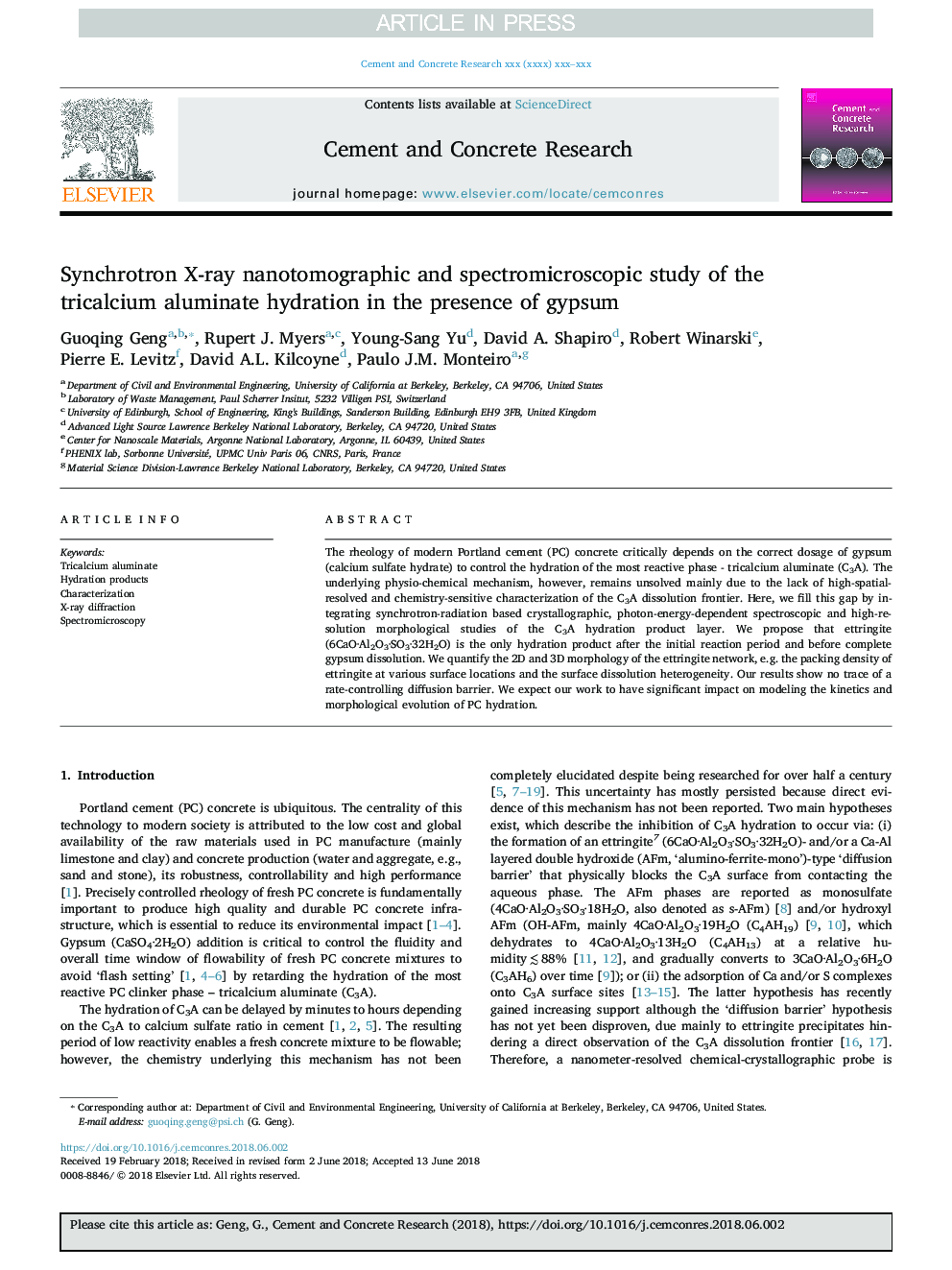| Article ID | Journal | Published Year | Pages | File Type |
|---|---|---|---|---|
| 7884447 | Cement and Concrete Research | 2018 | 8 Pages |
Abstract
The rheology of modern Portland cement (PC) concrete critically depends on the correct dosage of gypsum (calcium sulfate hydrate) to control the hydration of the most reactive phase - tricalcium aluminate (C3A). The underlying physio-chemical mechanism, however, remains unsolved mainly due to the lack of high-spatial-resolved and chemistry-sensitive characterization of the C3A dissolution frontier. Here, we fill this gap by integrating synchrotron-radiation based crystallographic, photon-energy-dependent spectroscopic and high-resolution morphological studies of the C3A hydration product layer. We propose that ettringite (6CaO·Al2O3·SO3·32H2O) is the only hydration product after the initial reaction period and before complete gypsum dissolution. We quantify the 2D and 3D morphology of the ettringite network, e.g. the packing density of ettringite at various surface locations and the surface dissolution heterogeneity. Our results show no trace of a rate-controlling diffusion barrier. We expect our work to have significant impact on modeling the kinetics and morphological evolution of PC hydration.
Related Topics
Physical Sciences and Engineering
Engineering
Industrial and Manufacturing Engineering
Authors
Guoqing Geng, Rupert J. Myers, Young-Sang Yu, David A. Shapiro, Robert Winarski, Pierre E. Levitz, David A.L. Kilcoyne, Paulo J.M. Monteiro,
